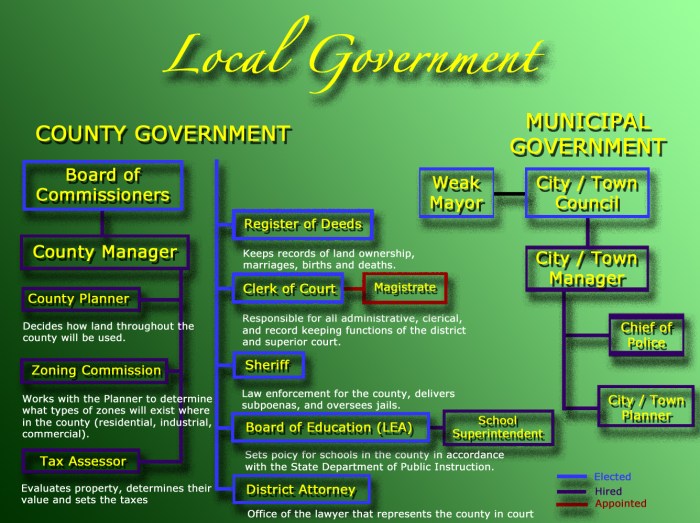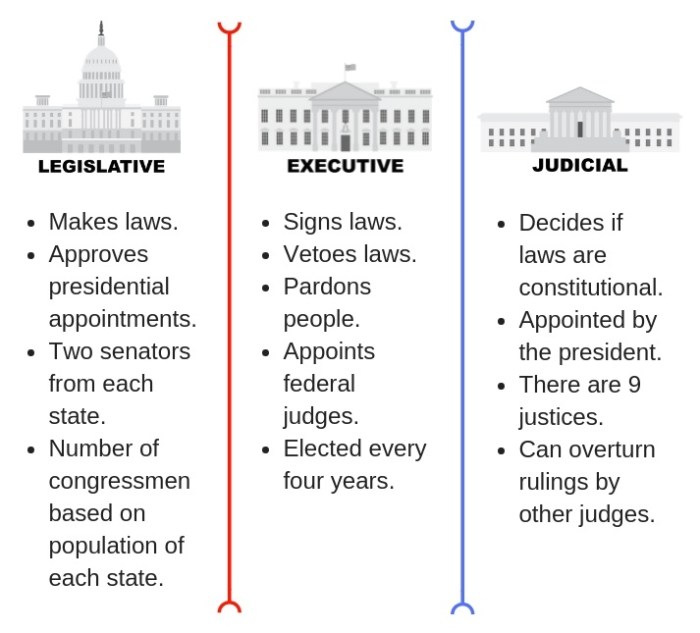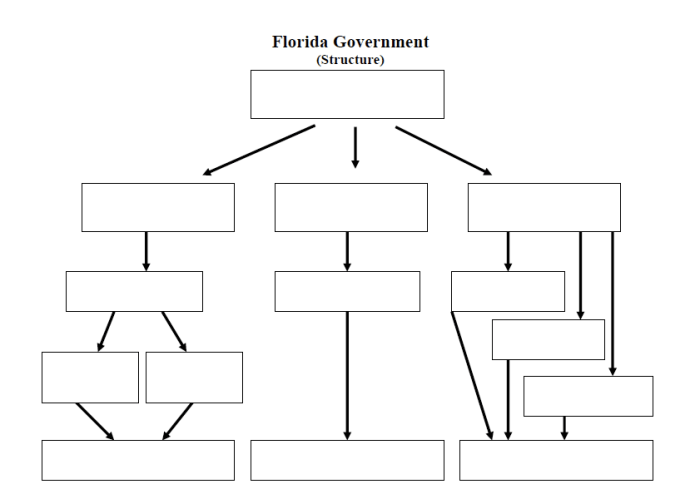Graphic organizer three branches of government – The graphic organizer for the three branches of government is an invaluable tool for understanding the intricate structure and functions of the United States government. This guide provides a comprehensive overview of the three branches, their powers and responsibilities, and the system of checks and balances that ensures their harmonious operation.
Delving into the heart of the topic, we will explore the various ways in which graphic organizers can enhance students’ comprehension of this fundamental concept. By presenting the information in visual formats, such as tables, flowcharts, and bulleted lists, graphic organizers make the complex interplay between the branches more accessible and engaging.
Branches of Government

The United States government is divided into three branches: the legislative, executive, and judicial branches. Each branch has its own powers and responsibilities, and they work together to create a system of checks and balances that prevents any one branch from becoming too powerful.
The legislative branch is responsible for making laws. It is made up of the Senate and the House of Representatives. The Senate has 100 members, two from each state. The House of Representatives has 435 members, who are elected from districts within each state.
The number of representatives each state gets is based on its population.
The executive branch is responsible for carrying out the laws. It is made up of the president, the vice president, and the Cabinet. The president is the head of the executive branch and is responsible for appointing the members of the Cabinet.
The Cabinet is made up of the heads of the different departments of the government, such as the Department of State, the Department of Defense, and the Department of Justice.
The judicial branch is responsible for interpreting the laws. It is made up of the Supreme Court, the federal courts of appeals, and the federal district courts. The Supreme Court is the highest court in the land and has the final say on the interpretation of the law.
System of Checks and Balances, Graphic organizer three branches of government
The system of checks and balances is designed to prevent any one branch of government from becoming too powerful. Each branch has the power to check the other branches. For example, the legislative branch can pass laws that override the president’s vetoes.
The executive branch can veto laws passed by the legislative branch. The judicial branch can declare laws passed by the legislative branch to be unconstitutional.
Graphic Organizers

Graphic organizers can be a helpful tool for students to learn about the three branches of government. They can help students to visualize the different branches and their powers and responsibilities. There are many different types of graphic organizers that can be used to teach about the three branches of government, such as tables, flowcharts, and bulleted lists.
Tables are a good way to compare the three branches of government. They can show the different powers and responsibilities of each branch, as well as how they interact with each other.
Flowcharts are a good way to illustrate the flow of power between the three branches of government. They can show how laws are made, how they are executed, and how they are interpreted.
Bulleted lists are a good way to organize information about the three branches of government. They can be used to list the powers and responsibilities of each branch, as well as the different types of checks and balances that exist between the branches.
Applications

Graphic organizers can be a helpful tool for students to understand the three branches of government. They can help students to visualize the different branches and their powers and responsibilities. There are many different types of graphic organizers that can be used to teach about the three branches of government, such as tables, flowcharts, and bulleted lists.
Tables are a good way to compare the three branches of government. They can show the different powers and responsibilities of each branch, as well as how they interact with each other.
Flowcharts are a good way to illustrate the flow of power between the three branches of government. They can show how laws are made, how they are executed, and how they are interpreted.
Bulleted lists are a good way to organize information about the three branches of government. They can be used to list the powers and responsibilities of each branch, as well as the different types of checks and balances that exist between the branches.
Additional Resources: Graphic Organizer Three Branches Of Government

- The White House: Our Government
- The United States Senate
- The United States House of Representatives
- The Supreme Court of the United States
Frequently Asked Questions
What are the three branches of government?
The three branches of government are the legislative branch (Congress), the executive branch (the President), and the judicial branch (the Supreme Court).
What is the purpose of the system of checks and balances?
The system of checks and balances is designed to prevent any one branch of government from becoming too powerful. Each branch has the ability to check the power of the other two branches.
How can graphic organizers help students understand the three branches of government?
Graphic organizers can help students understand the three branches of government by providing a visual representation of their structure and functions. This can make it easier for students to see how the different branches interact with each other.